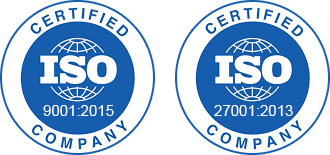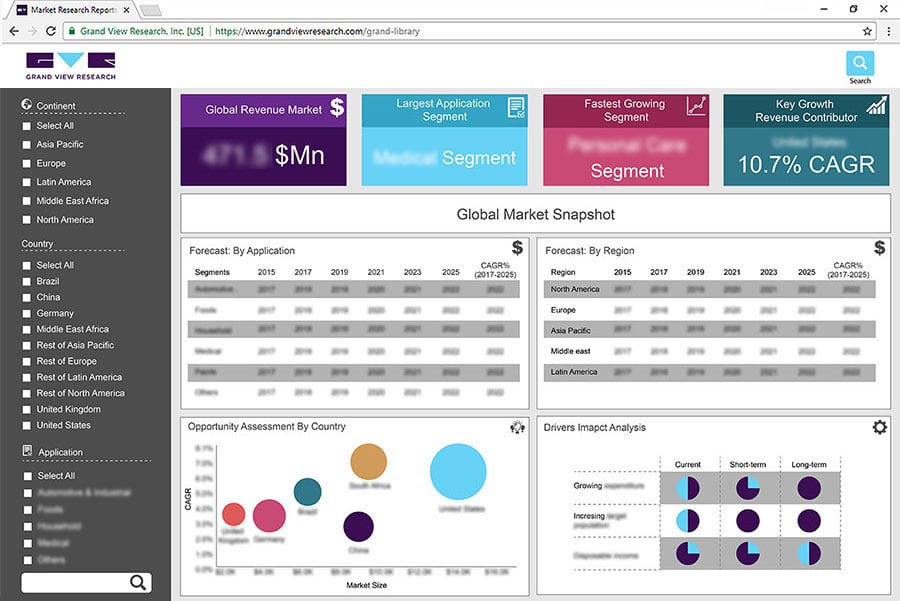- Home
- »
- Medical Devices
- »
-
Injection Pen Market Size, Share And Growth Report, 2030GVR Report cover
![Injection Pen Market Size, Share & Trends Report]()
Injection Pen Market Size, Share & Trends Analysis Report By Product (Disposable, Reusable), By Application (Osteoporosis, Diabetes Anaphylaxis), By End-use (Hospitals), By Region, And Segment Forecasts, 2024 - 2030
- Report ID: GVR-2-68038-445-1
- Number of Report Pages: 100
- Format: PDF, Horizon Databook
- Historical Range: 2018 - 2022
- Forecast Period: 2024 - 2030
- Industry: Healthcare
Injection Pen Market Size & Trends
The global injection pen market size was valued at USD 37.82 billion in 2023 and is projected to grow at a CAGR of 7.2% from 2024 to 2030. A rising number of chronic diseases, osteoporosis, diabetes, cardiovascular disease, and multiple sclerosis are driving the demand for injection pens market. Injector pens are ideal for chronic conditions that require frequent dosing. Another factor propelling the market is the growing utilization of innovative reusable injection pens, and the growing demand for automated injection pens. Medical practitioners are turning to automated injection pens owing to their safety, simplicity, convenience, and accuracy in administering medication.

Furthermore, a growing number of diabetic patients and its seriousness worldwide has necessitated demand for insulin injections. For instance, according to the Institute for Health Metrics and Evaluation, over 500 million individuals globally have diabetes, impacting people of all ages and genders in every nation. This number is expected to surpass 1.3 billion in the next three decades, with diabetes becoming one of the top 10 causes of death and disability, with a current global prevalence rate of 6.1%. Moreover, sales of injection pens for administering insulin to treat type 2 diabetes have surpassed sales of vials, as reported by the National Institutes of Health (NIH). Injection devices are commonly utilized to self-administer insulin injections for diabetes treatment daily. Patients prefer using a pen injection method, rather than a syringe, to administer insulin from a vial due to its simplicity. As a result, the growing occurrence of diabetes within the population has led to a rise in the use of injection pens.
Moreover, these devices enable individuals with chronic illnesses to manage their treatment timeline and location, leading to increased autonomy and flexibility in their home, social, and work routines. Eliminating the necessity to go to a clinic or hospital for frequent injections offers financial advantages to both the patient and the healthcare system
Product Insights
Reusable products dominated the market in 2023 and are expected to register the fastest CAGR during the forecast period due to the growing focus on environmental sustainability in the healthcare industry. Disposable injection pens generate significant plastic waste, raising concerns about their ecological impact. Reusable pens, on the other hand, offer a more environmentally friendly alternative. This resonates with both patients and healthcare prioritizing eco-conscious practices.
In addition, patients who requires regular injections benefit from this cost-effective solution. Moreover, healthcare facilities have the potential to decrease their total costs for injection pens by switching to reusable models. Furthermore, technology improvements are leading to the creation of user-friendly designs that encourage taking medication correctly and guarantee precise dosing. Furthermore, efforts were made to improve convenience and safety by focusing on easy cartridge replacement and proper sterilization procedures.
Application Insights
Diabetes dominated the market in 2023 due to injection pens multiple advantages over traditional insulin administration methods such as syringes and vials. These pens provide improved precision in dosage, easier use, discretion, and mobility, specifically designed for those managing diabetes as part of their daily schedules. Unhealthy eating habits are a primary factor in raising blood sugar levels, playing a major role in the development of type 1 diabetes.

Anaphylaxis is projected to grow at the fastest CAGR over the forecast period. This surge is primarily driven by a concerning rise in the global prevalence of anaphylaxis, particularly among children. This fuels the demand for epinephrine auto-injectors, a critical tool for managing anaphylactic reactions. In addition, increasing awareness about anaphylaxis and its potentially life-threatening nature is prompting healthcare professionals to prescribe auto-injectors more readily.
End Use Insights
Hospitals dominated the market in 2023 due to the quick acceptance and boost from the rise in government efforts to enhance healthcare infrastructure and the increasing population of diabetes patients within the evaluated timeframe. The primary factors driving the growth of this market are enhanced healthcare spending by consumers, higher disposable income, and increased consumer awareness of injection pen usage. This is mainly due to the growing elderly population and the increasing prevalence of diseases such as diabetes. Hospitals contain specific infrastructure and advanced medical equipment. Additionally, an increasing number of patients with diabetes and chronic conditions require injection pens, resulting in more procedures being performed in hospitals.
Clinics are expected to register the fastest CAGR during the forecast period due to the growing occurrence of chronic illnesses requiring heightened patient monitoring and medications. Government efforts to encourage patients to adhere to their medications and master injection techniques may motivate healthcare providers to use injection pens in clinical settings.
Regional Insights
North America injection pen market dominated the market with a revenue share of 43.4% in 2023. The rising occurrence of non-communicable diseases, such as diabetes, cancer, cardiovascular conditions, and multiple sclerosis in countries like Canada and the U.S. is a major factor driving the growth of the market. Increased healthcare spending, better knowledge of modern drug delivery methods, and easy access to injection pens and cartridges are driving the market in North America

U.S. Injection Pen Market Trends
The U.S. injection pen market dominated North America in 2023 due to the importance of government laws backing the healthcare system and the rising prevalence of illnesses such as diabetes, and cardiovascular disease. As per the eport by CDC, in the U.S. in 2000, there were more than 120 million individuals with more than one chronic condition. This number is expected to experience an annual increase of more than 1% until 2030. Therefore, from 2000 to 2030, there will be a 40% increase in the population of North America with chronic illnesses, equating to roughly 50 million people.
Europe Injection Pen Market Trends
Europe injection pen market was identified as a lucrative region in 2023 owing to the increasing age of the population in the region. Moreover, this region leads in conducting clinical trials, and worldwide, it ranks in the top five. The EU Clinical Trials Register currently shows 43,941 clinical trials with a EudraCT protocol.
Asia Pacific Injection Pen Market Trends
Asia Pacific injection pen market is anticipated to witness significant growth due to the incidence of chronic diseases, such as diabetes, being on the rise. This is attributed to urbanization, changing lifestyles, and an aging population. This increase has greatly boosted the need for injection pens, which are favored for self-administering insulin and other necessary medications used to treat chronic conditions.
The China injection pen market held a substantial market share in 2023 driven by a demographic shifts and changes in lifestyle. The increasing elderly population is a significant factor, leading to a higher chance of developing issues such as diabetes.
Key Injection Pen Company Insights
Some of the key companies in the injection pen market include Pfizer Inc., Novartis AG, Sanofi, and Merck KGaA. To obtain a competitive advantage in the market, businesses are concentrating on growing their customer base. As a result, important players are pursuing several calculated risks, including partnerships, mergers, and acquisitions with other major companies.
-
Sanofi offers a range of user-friendly injection pens like SoloStar and OptiClik, and develop solutions for eco-friendly disposal through take-back programs in some countries.
Key Injection Pen Companies:
The following are the leading companies in the injection pen market. These companies collectively hold the largest market share and dictate industry trends.
- BD
- Lilly
- Ypsomed AG
- Biocon
- Pfizer Inc.
- Novartis AG
- Novo Nordisk A/S
- Sanofi
- Owen Mumford Ltd.
- Merck KGaA
Recent Developments
-
In February 2023, Sanofi and Glooko Inc. partnered to enhance diabetes support for individuals and healthcare providers by combining SoloSmart with the Glooko platform. Through this collaboration, Sanofi is looking to enhance the availability of digital tools for individuals with diabetes in all the specified markets where SoloSmart will be offered.
-
In February 2024, Eli Lilly introduced the Mounjaro drug in the UK, making it the fourth European country to release the highly anticipated obesity medication. The MHRA approved a four-dose version of Mounjaro (tirzepatide) - Mounjaro KwikPen, for diabetes and weight management treatment.
Injection Pen Market Report Scope
Report Attribute
Details
Market size value in 2024
USD 40.01 billion
Revenue forecast in 2030
USD 60.72 billion
Growth Rate
CAGR of 7.2% from 2024 to 2030
Base year for estimation
2023
Historical data
2018 - 2022
Forecast period
2024 - 2030
Quantitative units
Revenue in USD billion and CAGR from 2024 to 2030
Report coverage
Revenue forecast, company ranking, competitive landscape, growth factors, and trends
Segments covered
Product, application, end-use, region
Regional scope
North America, Europe, Asia Pacific, Latin America, MEA
Country scope
U.S., Canada, Mexico, Germany, UK, France, Spain, Denmark, Sweden, Norway, China, Japan, India, South Korea, Australia, Thailand, Brazil, Argentina, KSA, UAE, and South Africa
Key companies profiled
BD; Lilly; Ypsomed AG; Biocon; Pfizer Inc.; Novartis AG; Novo Nordisk A/S; Sanofi; Owen Mumford Ltd.; and Merck KGaA;
Customization scope
Free report customization (equivalent up to 8 analyst working days) with purchase. Addition or alteration to country, regional & segment scope.
Pricing and purchase options
Avail customized purchase options to meet your exact research needs. Explore purchase options
Global Injection Pen Market Report Segmentation
This report forecasts revenue growth at global, regional, and country levels and provides an analysis of the latest industry trends in each of the sub-segments from 2018 to 2030. For this study, Grand View Research has segmented the global injection pen market report based on product, application, end use, and region:

-
Product Outlook (Revenue, USD Billion, 2018 - 2030)
-
Disposable
-
Reusable
-
-
Application Outlook (Revenue, USD Billion, 2018 - 2030)
-
Diabetes
-
Anaphylaxis
-
Osteoporosis
-
Growth Hormone Deficiency
-
Arthritis
-
Others
-
-
End Use Outlook (Revenue, USD Billion, 2018 - 2030)
-
Hospital
-
Clinics
-
Home Care Settings
-
-
Regional Outlook (Revenue, USD Billion, 2018 - 2030)
-
North America
-
U.S.
-
Canada
-
Mexico
-
-
Europe
-
Germany
-
UK
-
France
-
Italy
-
Spain
-
Denmark
-
Sweden
-
Norway
-
-
Asia Pacific
-
China
-
Japan
-
India
-
South Korea
-
Australia
-
Thailand
-
-
Latin America
-
Brazil
-
Argentina
-
-
Middle East and Africa (MEA)
-
Kuwait
-
UAE
-
South Arabia
-
South Africa
-
-
Share this report with your colleague or friend.
![gvr icn]()
NEED A CUSTOM REPORT?
We can customize every report - free of charge - including purchasing stand-alone sections or country-level reports, as well as offer affordable discounts for start-ups & universities. Contact us now
![Certified Icon]()
We are GDPR and CCPA compliant! Your transaction & personal information is safe and secure. For more details, please read our privacy policy.
We are committed towards customer satisfaction, and quality service.
"The quality of research they have done for us has been excellent."





